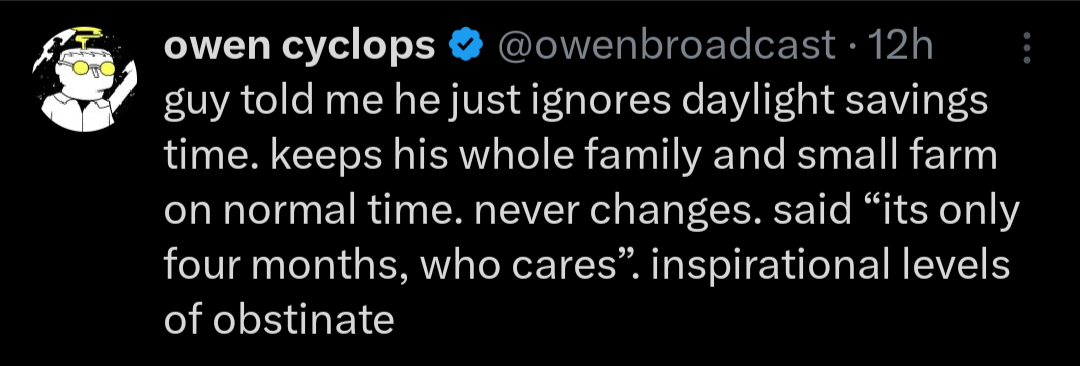this post was submitted on 07 Oct 2024
1139 points (99.4% liked)
People Twitter
5449 readers
904 users here now
People tweeting stuff. We allow tweets from anyone.
RULES:
- Mark NSFW content.
- No doxxing people.
- Must be a pic of the tweet or similar. No direct links to the tweet.
- No bullying or international politcs
- Be excellent to each other.
- Provide an archived link to the tweet (or similar) being shown if it's a major figure or a politician.
founded 2 years ago
MODERATORS
you are viewing a single comment's thread
view the rest of the comments
view the rest of the comments

You are describing solar noon: the highest position the sun reaches during the day.
Solar noon occurs some time between 11:30AM and 12:30PM in local standard time, depending on where exactly you are within your time zone: the east edge of your time zone experiences solar noon 60 minutes earlier than the west edge of your time zone. Solar noon only matches local standard time in the middle of the timezone.
Solar noon occurs between 12:30 PM and 1:30 PM in local Daylight Savings Time, depending on where exactly you are within your time zone. The clocks have shifted an hour, pushing solar noon an hour later in the chronological day.
Solar noon does not occur at 12PM during the summer in locations that observe DST. The clock shifts forward relative to the sun, moving solar noon back an hour.
We gain 6 hours of daylight.
Under standard time, we gain 3 hours of daylight before noon and 3 hours after noon going from winter to summer. Sunrise is about 3 hours earlier, and sunset is about 3 hours later.
But, because we also shift the clocks, sunrise is only two hours earlier in summer DST than winter Standard Time. Sunset is four hours later in summer DST than winter Standard Time. We effectively gain 2 hours of morning and 4 hours of evening time.